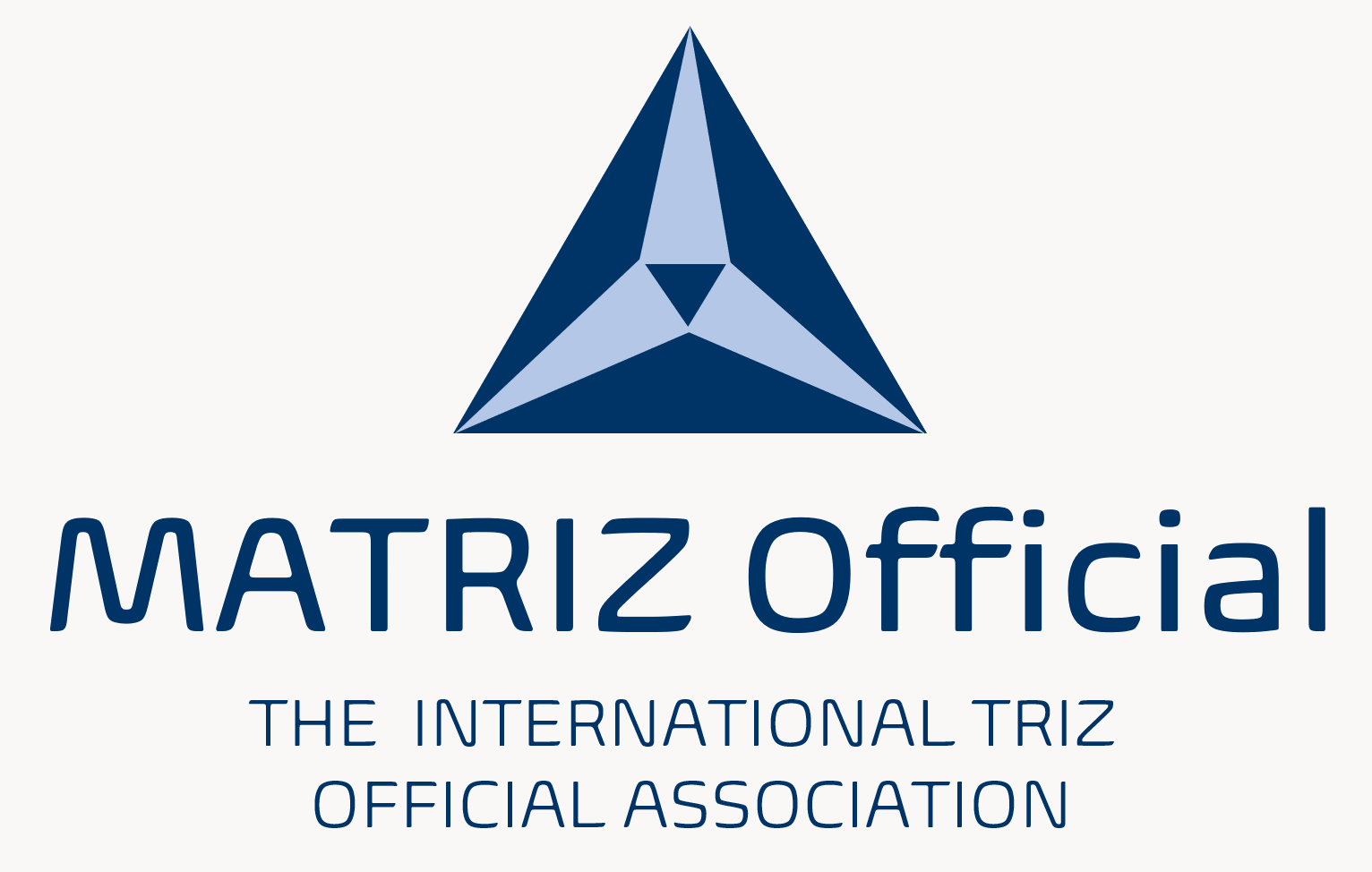MATRIZ Official Certification Program
TRIZ Specialist in Education - Level 1
Development of Critical and Innovative Thinking with TRIZ
1. Tools
1. The importance of critical and innovative thinking development in the modern world. TRIZ as a basis for the formation of transversal competences. History of TRIZ
1.1 History of creation and evolution of TRIZ. Areas of application of modern TRIZ.
1.2 Altshuller’s heritage: TRIZ, Creative Imagination Development (CID), Theory of Creative individual Development (TRTL)
1.3 TRIZ in Education. TRIZ Masters and schools.
2. Development of thinking styles and information perception channels, their role in the TRIZ system
2.1 Formation of sensory experience (studying the properties of objects through perception channels, manipulation and experiments).
2.2 Definition, goals, stages and ways of development of visual and associative thinking.
2.3 Exercises and games for the development of visual and associative thinking in classroom.
2.4 Developing a lesson for visual, associative thinking and sensory experience development.
3. Psychological Inertia (PI). Ways of overcoming it
3.1 Definition. Three categories according to the source of PI (interaction with the object, interaction with the environment, reaction of the subject)
3.2 Types of PI (inertia of habitual function; inertia of habitual properties, states, parameters; inertia of principle of action, field of knowledge; inertia of redundant information; inertia of habitual special terms). Examples and ways of overcoming it.
3.3 Tasks and games to overcome PI in classroom.
3.4 Practical task. Developing a lesson using PI breaking tools.
4. Creative Imagination Development (CID). Principles and methods of CID
4.1 History of creation. Principles and methods of CID.
4.2 Fantasizing principles (increase-decrease; merging-segmentation; vitalization-petrification; “the other way round”; dynamics-statics)
4.3 Application of the fantasizing principles in education.
4.4 Practical task. Designing a lesson using at least two fantasizing principles.
4.5 Methods of CID (method of focal objects; Robinson Crusoe method; analogy method; morphological analysis; snowball method; method of the numbered axis).
4.6 Application of CID methods in education.
4.7 Criteria for evaluating creative works.
4.8 Practical task. Developing a lesson using any of the CID methods.
5. Introduction to Function Analysis (FA)
5.1 Definition, stages of function analysis, significance and boundaries of application.
5.2 Function (definition, conditions of existence and formulation rules). Function categories: useful (main, additional, auxiliary), harmful. Levels of performance of useful functions.
5.3 Problem solving using the TRIZ functional approach applied to education (finding the missing component of the function).
5.4 Practical task. Developing an exercise/game using functional approach.
6. Introduction to Cause-Effect Chains Analysis
6.1 Definition. Types of causal relationships ("If ... then", "because"). “And”, “or” operators.
6.2 Building cause-effect chains. Identification of key disadvantages.
6.3 Application of cause-effect chains analysis model in classroom.
6.4 Practical task. Developing an exercise/game using cause-effect chains.
7. System Operator (SO). Poly-Screen Model
7.1 Basic concepts: system and its boundaries, supersystem, subsystem.
7.2 System development, building a system operator (9 screens).
7.3 Poly-screen model (ontogenesis, phylogenesis). Differences between the poly-screen model and the system operator.
7.4 Application of the system operator and the poly-screen model in education.
7.5. Practical task. Developing a lesson using the SO/poly-screen model.
8. Contradiction
8.1 Definition. Types of contradiction.
8.2 Formulation of physical contradiction. Ways to resolve a physical contradiction.
8.3 Application of the physical contradiction model in education.
8.4 Practical task. Developing games/exercises to build up the skill of formulating a physical contradiction.
9. Problems and problem-solving algorithms
9.1 Types of problems (research, inventive) and their definitions.
9.2 Pre-TRIZ methods of problem solving (brainstorming, analogy method).
9.3 Types of resources and resource analysis. Problem solving with resource approach.
9.4 Problem solving chain “physical contradiction – ideal final result – resources”.
9.5 Analysis and evaluation criteria for solutions.
9.6 Searching and making up problems for educational purposes.
9.7. Practical task. Composing and solving a problem with the help of TRIZ tools.
10. Lesson Constructor
10.1 Aims, means, content of classes.
10.2 Subject class with TRIZ tools Lesson Constructor.
10.3 TRIZ Lesson Constructor.
10.4 Developing games and exercises with TRIZ Tools.
10.5 Practical task. Independent development of a lesson.
11. Final test and practical task
11.1 Written test
11.2 Developing a game or exercise for children aimed at learning a TRIZ tool, CID technique or method (should include description of the purpose of the game, rules, necessary attributes).
11.3 Drawing up a lesson plan for mastering a TRIZ tool by young learners (at the choice of a participant).
11.4 Developing four tasks for children that demonstrate the integration of TRIZ tools with academic subjects, a particular unit or topic. Required tools for integration: system operator and poly-screen, function, cause-effect chains, problem solving with application of IFR, contradictions and resources.
